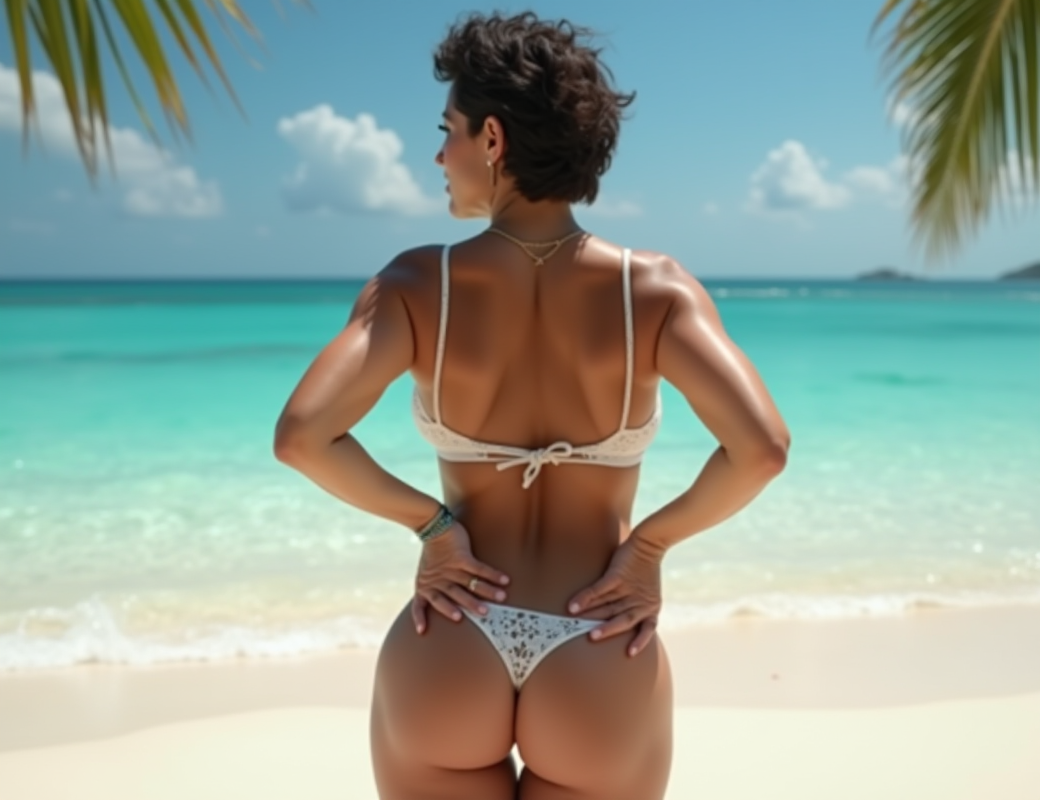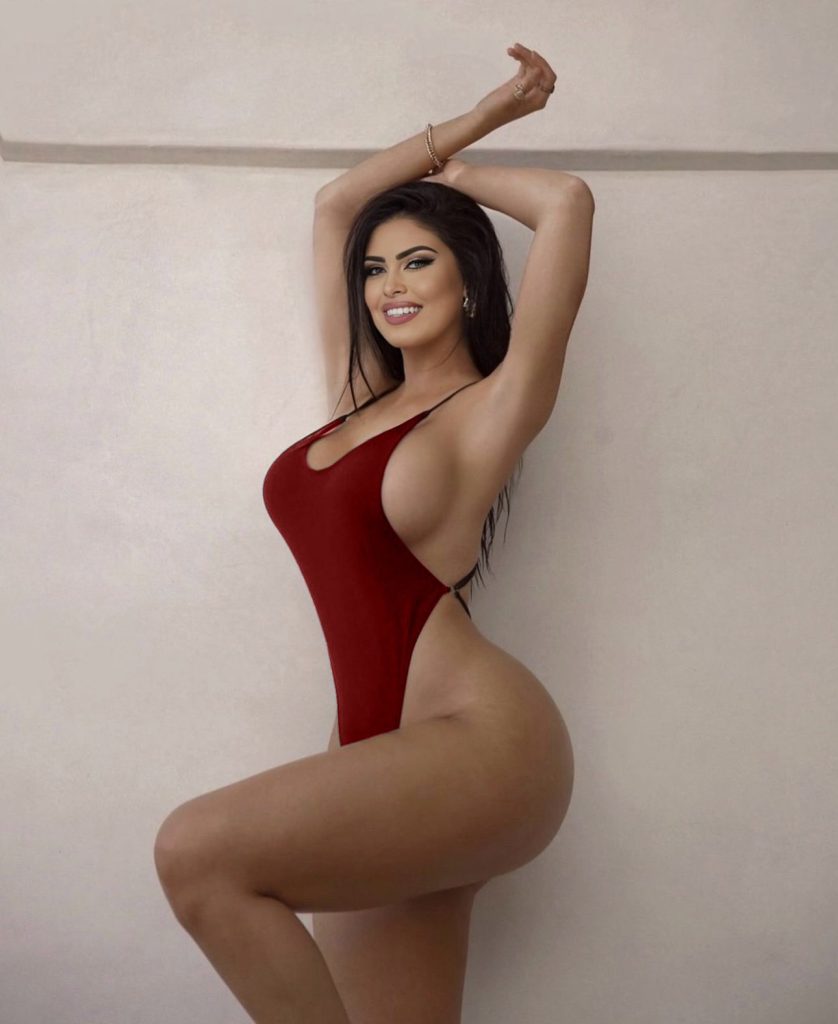Key Takeaways
-
Compared to conventional blind techniques, ultrasound-guided cannula placement allows for real-time, dynamic visualization of target veins, increasing efficacy and safety.
-
This technique is particularly useful in patients with challenging venous access. It is particularly beneficial in patients with obesity, history of prior surgeries, or difficult anatomy.
-
With a reduction in complications such as arterial puncture and hematoma due to the use of ultrasound, patient comfort and satisfaction during the procedure is enhanced.
-
Success depends on proper training, teamwork, and communication, with practice and continued education advised to keep skills sharp.
-
State of the art ultrasound equipment is critical to obtaining crisp imaging and optimizing outcomes in American healthcare environments.
-
Integrating ultrasound guidance into routine clinical practice can enhance patient care, support efficiency, and foster a culture of continuous improvement among healthcare teams.
Ultrasound-guided cannula placement is a practice increasingly used by doctors and nurses to ensure more precision. They use real-time ultrasound imaging to guide placement of a cannula, or thin tube, into a patient’s vein. This technique accurately finds veins that are otherwise hard to palpate or visualize.
It streamlines the procedure while increasing safety for both patients and staff. In fact, hospitals throughout the United States commonly use ultrasound guidance for IV initiation. This approach is particularly important for patients with small veins, deep veins, or difficult veins.
It can reduce the chance of missing the vein, causing a bruise, or other complications. Using this approach, care teams are able to more quickly obtain IV access while causing less pain. The following sections further detail the technique, advantages, and pearls employed in everyday practice.
What Is Ultrasound-Guided Cannulation?
It relies on real-time ultrasound images to guide the placement of a cannula, or thin tube, into a blood vessel. This method increases efficiency, precision, and security of IV therapy, blood draws, or medication administration.
It’s no surprise then that in hospitals all over the United States, this method has become the norm for patients with difficult-to-locate veins. It reduces patient risk and maximizes patient benefits. The bottom line is that furthering your knowledge of anatomy surrounding the veins is vital for those who utilize this important technique.
1. Seeing Inside: The Core Concept
Ultrasound provides a real-time view of veins, arteries, and nerves under the skin. With the help of a live ultrasound image, they are able to maneuver the needle with improved precision.
They drastically reduce the chances of a missed vein or an inadvertent injury. Unlike the traditional method—which relies on palpating for the vein—ultrasound provides a visual of the target.
There are two main ways to do this: the short axis (crosswise view) and long axis (lengthwise view). Each has advantages and disadvantages, but both allow the provider to align the ultrasound probe with the vessel’s trajectory.
Success hinges on getting the probe in the correct position and maintaining a stable image, so the needle tip remains visible.
2. When Is It Truly Needed?
That’s when ultrasound guidance truly shines. This can apply to patients with obesity, significant swelling, or a history of numerous IVs.
It is equally effective in emergencies, when time is of the essence and rapid vascular access is key. For those who have undergone prior surgery or chemotherapy, veins may be scarred or elusive.
Here, ultrasound provides an obvious benefit.
3. Situations to Reconsider Its Use
Severe coagulopathies or local infections at the site are obvious contraindications. Other patients have atypical vein anatomy that complicates imaging even further.
As we know, patient history is key. After all, those classic “feel and poke” techniques are often more effective—particularly on simple cases.
4. Its Impact on Modern US Healthcare
This technique has revolutionized practice in ERs and ICUs nationwide. With fewer failed attempts comes a host of benefits, including decreased pain and complications such as arterial punctures.
Hospitals realize savings as well with less time and fewer materials being wasted. Ultrasound-guided cannulation has become a valued skill in and cornerstone of modern medical education and training.
Since it’s something newer nurses and doctors are taught early on, patients receive much better care.
5. My Take: A True Patient Care Advance
Ultrasound has already improved vascular access by making it safer and more comfortable. It reduces the amount of trial and error and anxiety experienced by both patient and provider.
Implementing this technique on a regular basis and continuously training providers is what will ultimately deliver the best benefits for everyone over the long haul.
Why Ultrasound Beats Blind Pokes
Ultrasound-assisted cannula placement is revolutionizing how healthcare teams access veins, even in urban, safety-net hospitals and outpatient clinics. Compared to standard blind pokes, this technique provides significant benefits in both safety and success. With this real-time imaging, healthcare workers will be able to visualize what they are doing, eliminating ambiguity and guesswork, resulting in improved patient outcomes.
Safer Punctures, Fewer Complications
With ultrasound, staff can visualize the needle as they guide it toward the vein, preventing arterial and nerve punctures. This real-time, direct vision significantly reduces the risk of complications such as arterial puncture, nerve injury, or hematoma.
In fact, one study found that ultrasound guidance significantly reduced the complication rate since each step is visualized and monitored. In one study, as few as 1.23 punctures were needed on average with ultrasound guidance, versus nearly three with blind pokes. The evidence is clear: real-time imaging means fewer problems.
Higher Success on First Try
First time success rates increase dramatically when ultrasound is used. The data backs that up — they’re a whopping 76% successful on the first poke!
To put this into perspective, blind pokes only work 16% of the time on the first try. Fewer blind pokes translate to reduced pain, reduced stress, and more efficient use of time. The skill of the operator is pretty freaking important as well! When you poke someone’s skin, it’s a bit of a shot in the dark without ultrasound, even if you’re super experienced.
Visualizing Hidden Veins Clearly
Ultrasound can visualize veins that are not palpable (able to be felt) or visible, which is especially important in patients with small or deep veins. By displaying the depth and diameter of veins, ultrasound assists staff in selecting the optimal site and appropriate catheter size.
Having veins deeper than 1.2 centimeters increases duration, and ultrasound is more effective at locating these veins.
A More Comfortable Patient Experience
A better patient experience is achieved with fewer sticks, which hurt less. One stick instead of many makes a big difference in comfort. Patients are much calmer when they understand what is going to happen.
They start to pay attention and get engaged when they realize the team is using the latest tools! Less poking around also results in a more relaxed, streamlined setting.
My View: The Evidence is Clear
Ultrasound is an irreplaceable component of today’s advanced care. The research behind that keeps growing, validating what so many teams like ours witness daily.
Clearly, training more staff in ultrasound is the next step.
Gearing Up: Essentials for Success
Preparing for ultrasound-guided cannula placement involves much more than selecting a probe. It requires the best equipment, experience, and a strong crew to conduct a flawless, safe maneuver.
Step by Step Here’s what it takes to make a successful setup happen.
Choosing Your Ultrasound and Probes
Choosing the right type of ultrasound machine is key. For IV placements, smaller portable units are most easily accommodated in cramped clinical environments. Linear array probes—particularly those with an 11-15 Hz frequency—provide crisp, rich images of superficial veins.
Picking the right probe largely depends on the size of your patient and the desired cannula placement. Another instance could be a pediatric patient requiring a higher frequency probe with greater detail.
Inspect your probe for cracks or gel buildup and keep it clean to ensure it’s functioning at its best!
Optimizing Machine Settings for Clarity
Creating good images is often as simple as beginning with the optimal machine settings. Optimize machine settings by selecting the needed frequency for the patient’s build—higher frequency for thin arms, lower for deeper veins.
Adjust the gain and depth until the vein edges appear bright and crisp. Align the probe marker with the blue dot on the top right of your screen to ensure the orientation remains clear.
It’s practice that makes each of these steps easier the next time around.
Patient and Site Preparation Steps
-
Wash hands and put on gloves.
-
Position patient so the target vein is accessible and visible.
-
Use a tourniquet to bring veins up.
-
Clean the skin with antiseptic.
-
Use sterile, single-use gel.
-
Get consent and explain the process.
Proper positioning is beneficial to the provider and the patient. Removing any skin debris and pathogens with a complete skin clean prevents infection at an early stage.
The Skilled Team You Need
This job’s not just for one person. Physicians, nurses, and ultrasound techs all play a role. Working together keeps things safe and quick.
Teams that train together, stay sharp. Regular skill checks and clear talk keep everyone on the same page.
My Tip: Thorough Prep Pays Off
Step 1 — Review the patient’s record and anatomy before beginning. Follow your standard protocol and continue to practice with the ultrasound.
Debriefing—after every case, debrief with your team—what went well, what can we do better next time.
Mastering the Ultrasound View
Mastery of ultrasound guidance for cannula placement is no small feat. To begin with, you need to understand how to achieve a quality view of the vessels. Next, identify the optimal puncture site and adjust to what you are viewing on the screen.
These skills translate to true advantages—reduced rates of complications, increased success, particularly when anatomy becomes challenging. Utilizing an 8-12 MHz linear probe allows for simple visualization of the vessel in short axis.
This technique allows for easier identification of the vein and monitoring of the needle trajectory. Each patient is unique, so being adaptable is critical. As with anything else, your practice is what you make it.
Spotting Key Anatomical Landmarks
Recognizing these anatomical landmarks guides avoidance of the carotid artery and major nerves. Key landmarks include the internal jugular vein (IJV), carotid artery (CA), subcutaneous tissue, and surrounding nerves and muscles.
Since the IJV and CA move around from patient to patient, understanding what you should be looking for is important. It reduces the number of non-ideal attempts and therefore makes the process safer for everyone involved.
In-Plane vs. Out-of-Plane Technique
While in-plane visualization allows the entire needle shaft to be observed, out-of-plane visualization only allows for observation of the needle tip. In-plane is preferable for deep veins or when precision is critical.
Out of plane is quicker for superficial veins, however it requires very acute focus to prevent error. Choosing the best approach should consider vein depth, location, and ultrasound findings. Practicing both in the lab and on patients enhances confidence.
Tracking the Needle Accurately
Tracking the needle accurately at all times is essential. Changing the needle angle—generally around 45°—and sweeping the probe allows you to follow its trajectory.
Only steady hands and a close eye on the screen can ensure the right side of the screen is in the right place.
Confirming Successful Cannula Placement
Ensure catheter tip is within target vein viewed on screen. Confirm with blood return as evidence. If it doesn’t, troubleshoot immediately—don’t assume or make a guess.
My Insight: Skill Comes With Practice
Mastering the ultrasound view and growing proficient in ultrasound-guided cannulation requires more than bedside reading. Session after session—including peer feedback and simulation labs—create the steady hands and sharp eyes needed to save lives.
Navigating Common Hurdles Smoothly
Ultrasound-guided cannula placement has its own set of challenges, even for the most experienced operators. Most clinicians encounter challenges such as difficult-to-locate veins, patient movement, or a needle that falls out of sight. Each one requires a combination of talent, perseverance and the proper equipment.
The capacity to adapt, finding solutions when things don’t go according to plan, is what makes experienced practitioners shine.

Where Did My Needle Go?
Losing the needle tip is the number one worry. Occasionally tissue density or shadowing obscures the tip, rendering it impossible to follow. Maintaining the ultrasound beam parallel and employing dynamic needle tip positioning (DNTP) techniques allows for greater tip visibility.
Should the needle go missing, stopping immediately and pulling back gently until it comes into view is an easy fix. If you can remain patient and level-headed, a simple remedy usually awaits.
Tackling Difficult or Small Veins
Difficult or small veins may require additional attention. Using a smaller gauge catheter, and improving vein distension with a tourniquet or warm compress also aids in successful insertion.
By changing the probe angle and using a little extra gel to eliminate air pockets, we improve the image and receive better results. In time, even inexperienced clinicians may learn to identify these veins early, allowing them to choose the appropriate access approach.
Recognizing Early Complication Signs
-
Swelling at the site
-
Sudden pain or discomfort
-
Change in blood return
-
Resistance during cannula advancement
Taking care to monitor for these early complication signs and being vigilant with a stepwise approach can avoid nasty complications. Recognizing early complication signs allows you to triage and act quickly.
Quick Solutions for Roadblocks
Frequent obstructions are the movement of the patient or challenging anatomy. Knowing you have backup plans—whether that’s being able to switch sites or easily ask for help—helps everyone stay focused and moving.
Cooperation and composure go a long way when unanticipated challenges arise.
My Experience: Stay Cool and Adapt
In handling difficult cases, I learned how to remain calm under pressure and go with the flow. They are not failures — each one is an opportunity to learn, reflect and improve.
Debriefing with honest feedback develops skill and confidence as it compounds day after day.
Beyond the Basics: Elevating Practice
Unfortunately, mastering the art of ultrasound-guided cannula placement is much more than just practicing cannon fodder 101. It involves layering new tools and ideas on top of established skills to improve the effectiveness and efficiency of practice and to provide safer, more reliable care.
Now, ultrasound technology is more sophisticated, producing crisper imaging and intuitive software. They’re available in desktop, portable, and handheld versions that easily integrate into fast-paced clinical environments. These improvements work together to dramatically improve your ability to identify veins, arteries, and nerves, even in challenging scenarios. By doing this, they in turn reduce missed attempts and injury rates.
Continual education is critical for everyone who interacts with these tools. Quality programs provide in-person, hands-on practice with short and long axis approaches, as both techniques have their benefits. In the short axis view, a cross-section of the vessel is provided, giving the provider a direct view of the needle entering the vessel lumen.
It can be tricky to needle to prevent the needle tip from bending at each stage, typically with the “creep method.” While the long axis view makes it easier to visualize the needle’s trajectory, this may be more difficult with deeper veins. Knowing both results in greater confidence when placing central lines or nerve blocks.
Turning fresh ideas into everyday practice requires collective effort. These simple steps bring about the change that truly matters. These include using a tourniquet to engorge the vein, choosing the appropriate site based on size and depth, and positioning the patient to maximize provider comfort.
When provided with adequate training, feedback and mentorship, the rest of the team rises to the occasion. Through open sharing, it reduces complications, including infiltration or nerve injury.
Conclusion
Ultrasound-guided cannula placement removes much of the guesswork and adds several clear wins. Nurses and techs can identify the vein, avoid the fishing around, and get it done quicker. Less pain, less poking, more smiling patients. Even difficult veins in people with complicated medical histories are easy with the correct equipment and expertise. In harried U.S. Hospitals, this technique is both time-saving, as it allows teams to move along more efficiently and prevents confusion from missed sticks. Looking to keep your work and advocacy skills honed as well? Train with actual equipment, seek candid feedback, and strive to learn something with each scan. Looking to sharpen your expertise and improve your workflow? Take the plunge on ultrasound guidance for your next cannula placement. The bottom line—your patients and your team will thank you.
Frequently Asked Questions
What is ultrasound-guided cannula placement?
What is ultrasound-guided cannula placement? Ultrasound-guided cannula placement is a procedure where clinicians use real-time, dynamic ultrasound imaging to guide the cannula into a vein. This technique increases procedural precision and minimizes complications—most notably for patients with difficult-to-locate veins.
How does ultrasound guidance improve cannulation success?
Using ultrasound guidance during cannulation, ultrasound guidance provides clinicians with a dynamic view of the vein and surrounding structures. This increased visibility is less likely to lead to a failed first attempt and is associated with a lower risk of arterial or nerve puncture.
Who benefits most from ultrasound-guided cannulation?
Those patients with challenging venous access—such as the obese, dehydrated, or patients with a history of IV drug use—are the ones who arguably benefit the most. It’s especially beneficial to pediatric, geriatric, and critically ill patients in hospitals throughout Los Angeles.
What equipment do I need for ultrasound-guided cannula placement?
What equipment do I need for ultrasound-guided cannula placement? Luckily, most hospitals and clinics in Los Angeles have access to these tools.
Is ultrasound-guided cannulation safer than the traditional method?
Yes. Research indicates that ultrasound-guided placement results in fewer complications and decreased pain. It results in better first-attempt success rates than the blind technique.
How do you learn ultrasound-guided cannulation?
Training typically includes multiple modalities such as hands-on workshops, simulation labs and supervised clinical practice. Almost all Los Angeles-based medical centers, including UCLA and Cedars-Sinai, provide in-depth tailored courses for healthcare professionals.
Can ultrasound-guided cannulation be used in emergency situations?
100% yes, and here’s why… This technology has made a tremendous impact in emergency rooms and trauma centers throughout the city of Los Angeles. In emergency medicine, quick and accurate IV access can often be lifesaving!





















